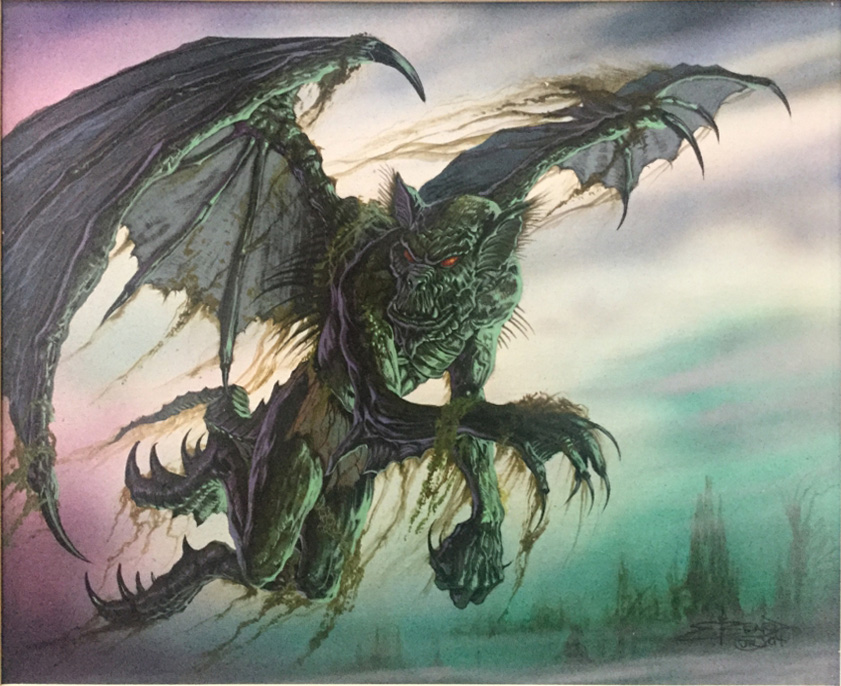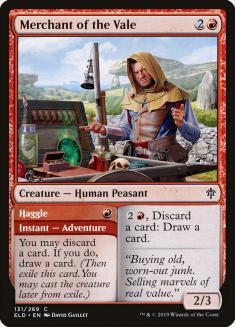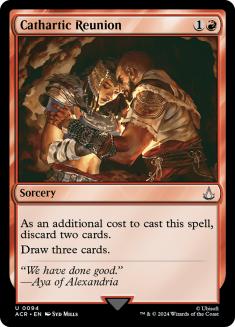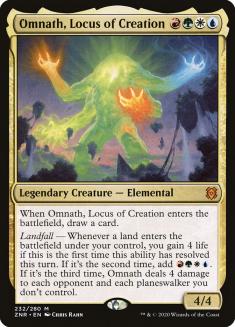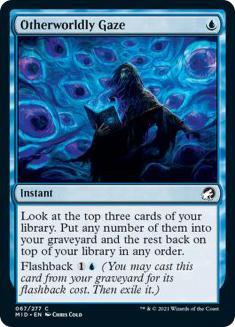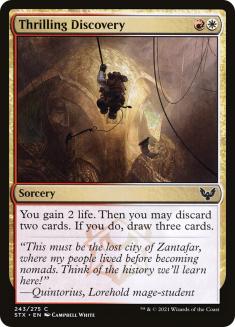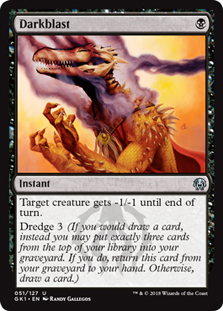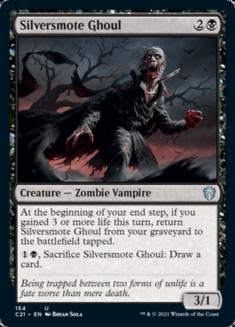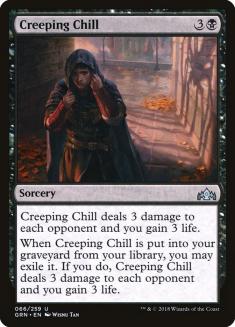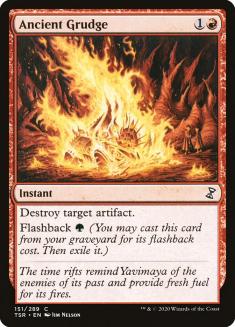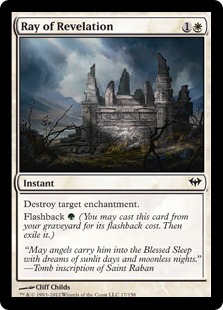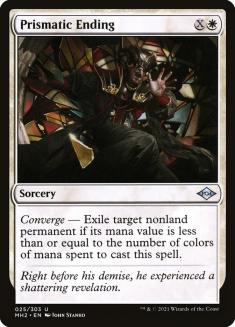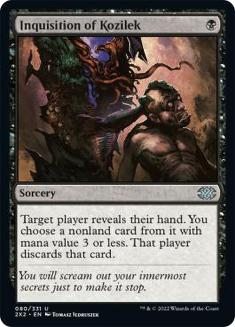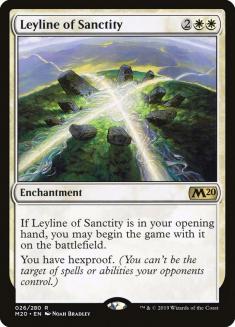When I hear the word “Dredge,” it gives me shivers. It’s a name that brings me dread. When someone is cooking fried chicken in my house and has to “dredge” the chicken, my fingertips go numb and my head starts to spin. All this is to say that Dredge is a terrifying deck to play against, and I have very bad memories of it.
When Hogaak, Arisen Necropolis was printed, it sent graveyard decks into overdrive. Traditional Dredge stopped existing because the Bridge from Below and Altar of Dementia combo was just too powerful with the huge Hogaak. Over the course of a few months and two banning cycles, Hogaak was gone, and took Faithless Looting and Bridge from Below with it. Was Dredge finally dead?
For a time, Merchant of the Vale was the closest thing we had to Faithless Looting. It stank to high heaven, but it was something, and something is much better than nothing when the whole world puts a target on your back. While Merchant of the Vale allowed the engine to start running on the first turn, it would never truly replace Faithless Looting, and ultimately the Dredge deck started to fall off in popularity. It seemed as if nothing could really replace the most powerful one-mana enabler of all time.
While Merchant of the Vale, and even Faithless Looting, were holding down the first turn, the most terrifying of all turns for Dredge was Turn 2.
Cathartic Reunion offered the deck serious combo potential. Discarding before draw allowed you to put Dredge cards directly into the graveyard so you could then Dredge them back and put ten to fifteen cards into your graveyard. When you’re playing a deck like Dredge, you have to think of your graveyard as another hand. It’s full of cards that are mostly useless, but one out of five or so does something heinous, so every Dredge becomes “draw a card” while unlocking a bunch of free effects.
Cathartic Reunion was always the most terrifying, but it was usually much better after a Faithless Looting. You needed to sculpt your hand over the first few turns so that Cathartic Reunion milled over the most cards, seeing the most graveyard effects possible. The ultimate goal was to drain your opponent for some amount via Creeping Chill and return some number of creatures to the battlefield. It was often too much for fair decks to handle, and fast enough to race some combo decks. Dredge was a monster, both consistent and powerful, and put the fear of God into everyone who played against it.
Modern Meta Snapshot
The last few months have been a boon for interaction. Modern Horizons 2 gave us so many removal spells and free interaction points with the mythic Elemental Incarnations that fast decks didn’t feel like they were out of our league. The raw speed available in Modern is outrageous, but the collective tools for disruption are enough to keep those strategies in check. With that said, you should always be looking for weak points in the metagame, and there’s a pretty big soft spot right now.
Omnath, Locus of Creation exists to dominate fair-on-fair matchups. It replaces itself, builds up a ton of mana, and gains the necessary life points to buffer yourself from aggressive strategies. In a world where everyone is playing on the same field, Omnath should topple most opponents. Since the format has homogenized to an extent, with most decks being interactive or built to insulate themselves from said interaction, linear strategies that dodge Prismatic Ending and Unholy Heat have started to increase in value.
Primeval Titan is back, and various combos that aren’t vulnerable to spot removal have made their presence known. Dredge can take it one step further and dodge removal completely. The only weak point is the graveyard, and it doesn’t seem like too many folk have a keen interest in keeping it completely in check. While some Urza’s Saga decks play a singleton Soul-Guide Lantern or Nihil Spellbomb, a single graveyard hate card is rarely enough to beat full-powered Dredge, and this new version is quite monstrous.
Creatures (21)
Lands (18)
Spells (21)

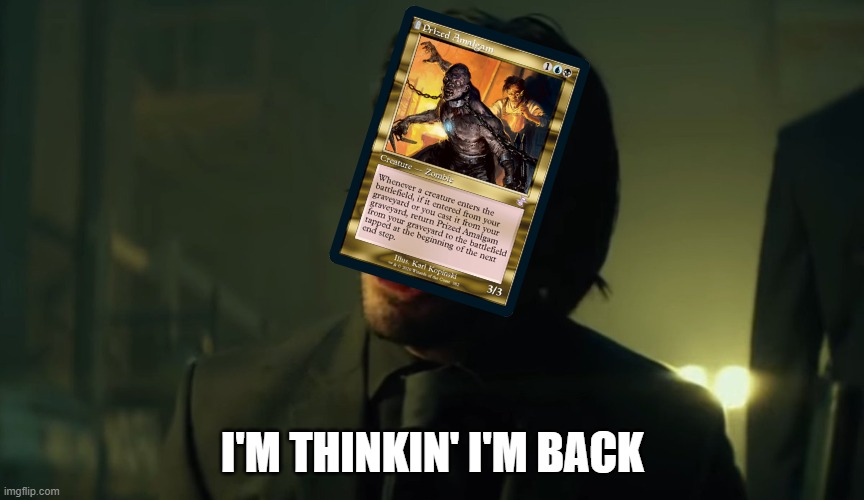
Please listen to me when I tell you that Dredge is back, and no one is safe. Pack your sideboard with Leyline of the Void, lest you be ravaged by this monstrosity. You may be thinking to yourself, “But Todd, I’m playing a deck that’s naturally advantaged against Dredge. I don’t need help.” Well, friendo, you’re wrong.
The Saviors
Dredge is a complex archetype that requires a lot of moving pieces to function properly. If one of those pieces gets banned, the deck stumbles until it finds a new card to replace the missing item. Payoffs rarely get banned, but enablers and engines like Faithless Looting and Golgari Grave-Troll are targeted relentlessly. When Faithless Looting went, we looked for years to find a replacement. Now, we have one.
Is it as good as Faithless Looting? Of course not. Is it better than all the other options in Modern? You bet your ass. Otherworldly Gaze looks like absolute trash at first, but it’s wicked. For one mana, you get to select the top three cards of your deck and put any number into the graveyard. With so many graveyard-related cards, you are extremely likely to hit something decent. With the Dredge mechanic as a focal point, we’re simply digging for those so we can get the party started.
Like Faithless Looting, the flashback is actually quite strong. If we’re low on resources due to mulligans, we can use Otherworldly Gaze twice to dig for our engine cards. Since our deck functions well off low resources, having a card like this that can provide double utility is excellent.
I’ve played Haggle and even Insolent Neonate before, so I know a thing or two about trash enablers. They’re in the deck to do one job, and do it as best they can. They often perform an action that’s rare for the deck or format, because we’re looking for very specific things when building a deck like Dredge. Otherworldly Gaze doesn’t kill creatures, and it ends up as a -1 on the “card advantage” scale, but so does Faithless Looting. The difference is having cards in hand to utilize versus cherry-picking the top of your deck. Faithless Looting rules because it gives you more looks at getting your engine online because it draws its card selection from hand.
But enough about Faithless Looting. It’s time to gaze into the future, and I like what I’m seeing.
With Otherworldly Gaze not interacting with your hand, and instead focusing on manipulating your deck, the onus of explosiveness is on your two-mana enablers. Cathartic Reunion and Thrilling Discovery do the same thing, and do it well. Cathartic Reunion was often heralded as the most-abused card in Dredge, with Faithless Looting making it consistent. There were builds that played Simian Spirit Guide to ramp into Cathartic Reunion, offering a first turn that was rarely matched. Thrilling Discovery is just more of the same, but obviously outclasses all similar effects. Tormenting Voice and the like have been played before, and none were as potent as Cathartic Reunion until we got a slightly different Cathartic Reunion.
With these two at our disposal on the second turn, having a Faithless Looting-type spell on the first turn is not as relevant. As long as we have a Dredge card in our opening hand, we can put it directly into the graveyard and start working. These two cards are the reason why Dredge is scary. A second-turn pitch and draw gives you so many digs at finding threats, and you can usually find enough threats that will overwhelm your opponent’s interaction.
The addition of Darkblast in high numbers is a product of cutting Life from the Loam. Old version went hard on Life from the Loam and Conflagrate to give the deck some punch, but it would also allow you to charge up lands on the battlefield so you could start casting Golgari Grave-Troll if the game didn’t exactly go your way. It was surprisingly effective. Even after the release of Golgari Grave-Troll into the abyss of the Banned List, Dredge kept Conflagrate and Life from the Loam because it let you burn your opponent out without using the combat phase.
Cutting Life from the Loam will be the most controversial part of this build, but it’s one I’m fully willing to embrace. Darkblast has a lot of utility in the current format, targeting many of the mana accelerators that we’ve come to know and love. Darkblast picking off their early threat and starting the chain on the first turn also makes your Cathartic Reunion package more explosive, all while adding a little interaction to the deck.
Older versions of Dredge shied away from Darkblast because you didn’t have targets. With Ragavan, Nimble Pilferer; Dragon’s Rage Channeler; and Ignoble Hierarch running around in high numbers, four copies of Darkblast are enough to give everyone else nightmares.
This might be the best Darkblast format of all time.
Creeping Chill changed the game in regards to Dredge. It buys you lots of time against Burn or other aggro decks, yet can also close out the last few points of damage in a pinch. The removal of Bloodghast for Silversmote Ghoul makes a lot of sense for one particular reason: we’re putting all our eggs in the Turn 2 basket. Getting back Bloodghast requires playing a land. We don’t have that many, and aren’t playing Life from the Loam. Since our focal point is the second turn, that means we can’t easily put Bloodghast into the graveyard and play a land on the second turn. That means we’re lagging one full turn behind when trying to bring back Bloodghast and ultimately our Prized Amalgams. Silversmote Ghoul gives you immediacy, which is crucial in older formats.
Silversmote Ghoul can come to fight on the second turn if you have a big Cathartic Reunion into Creeping Chill turn. That alone makes it worth the investment, as it can produce a ton of power a turn earlier than we would normally be expecting. While Bloodghast gave you staying power against a deck playing removal, Silversmote Ghoul does the same thing. Since we aren’t doing Bridge from Below tricks, the constant reanimation isn’t necessary, and it’s far too slow without Faithless Looting at our disposal.
This change in pace from Bloodghast, Life from the Loam, and all the other grindy elements to this tight little explosive package will put Dredge back on the map. We don’t want to play longer games because all our opponents have built their decks to win longer games. Few opponents are playing Force of Negation, so all we really need to worry about are anti-graveyard measures, but Dredge has been able to win in the face of those for over a decade.
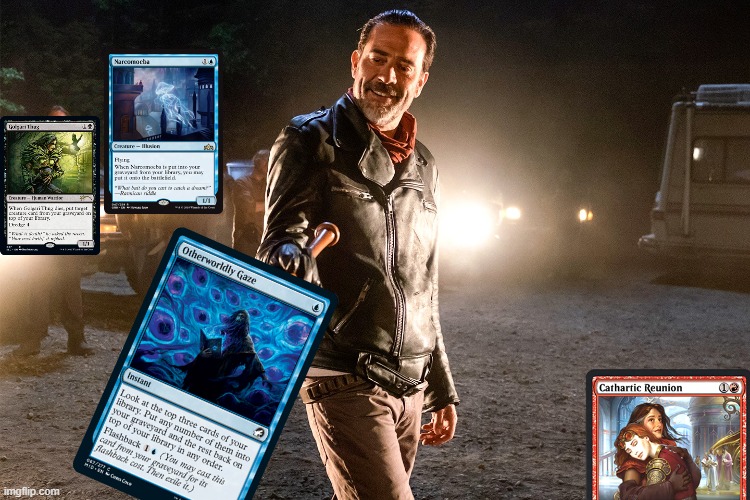
The Anti-Anti-Graveyard Conglomerate
The sideboards for Dredge and similar decks have always felt lackluster to me. For every card you add to your deck, you’re taking away consistency in what your deck is trying to do. I always found sideboarding with Dredge to be more difficult than other archetypes because I could feel myself losing a part of the deck no matter what I changed. So, with that in mind, I think it’s best to remember one thing: sideboarding with a deck like Dredge requires a light touch. Don’t mess with too much or else your deck will cease to function, even if your opponent isn’t hammering you with anti-graveyard interaction.
The nature of Dredge’s sideboard is to protect you from anti-graveyard measures. We’re in the anti-anti-graveyard business, and business is booming.
These old standby helpers are excellent singletons because your deck churns through so many cards every game. If you’re playing against Affinity or some weird enchantment deck, you get access to the most free removal spells of all time. If your opponent is hitting you with Grafdigger’s Cage or Rest in Peace, these cards can be drawn and interact with them in a normal way. And if they’re not playing a static anti-graveyard card, something like Soul-Guide Lantern, you can use these two sideboard cards through them.
This is the biggest upgrade to our sideboard. Prismatic Ending takes the place of all the old guard of anti-hate cards like Lightning Axe, Abrupt Decay, and Assassin’s Trophy. Prismatic Ending rolls all those into one efficient spell that can handle anything from Tormod’s Crypt to Leyline of the Void. If you haven’t played with Prismatic Ending yet, in any deck, I highly recommend it. It might go down as the best removal spell of all time.
One of the easiest ways for our opponents to beat us is to ignore us. We’re fast, but we’re not that fast. We’re resilient to removal, but we don’t interact well. These discard spells out of the sideboard give us a breath of life against anti-graveyard measures that get cast from hand, like Surgical Extraction, but their main purpose is allowing us to play a real game of Magic against a combo-centric opponent.
These two discard spells can slow our opponent down enough for us to get our engine online. Since the concentration of our explosive effects start at the two mana slot, our first turn is open to cast just about anything. Discard effects are great at handling weird decks, but their true intention above all else is to slow the game down. We only want to do that when our opponent is faster than we are, because we’re not interactive in the right ways without them. However, with five pieces of pinpoint interaction, a single discard effect in the early turns could be enough.
If you’re playing against an opponent with Nihil Spellbomb as their primary anti-graveyard measure, this one is a heater. However, its main purpose is to protect you from things you can’t interact with easily. Goblin Charbelcher is terrifying, but it doubles in utility by helping us against Burn or other decks with an emphasis on targeted interaction.
I think people sideboard this one in way too often, but I still like having access to it. This slot is malleable, and will regularly shift to Leyline of the Void or similar if the format calls for it.
Back from the Dead
The banning of Faithless Looting put Dredge into a really tight spot. I think Otherworldly Gaze could give the deck enough to do on the first turn that the explosive nature of Cathartic Reunion and Thrilling Discovery can make up for that loss. This build is fresh, clean, and ready for public consumption. Small things will change here and there, but the major changes made to the archetype have brought it back from the dead.
Dredge is often thought of as the most terrifying deck in any format where it can thrive. The consistency and explosiveness are unmatched, and any opponent wanting to interact with you needs to do so on your terms. I often speak of Dredge as a deck playing a different game. They’re playing Uno and their deck contains all Draw 4s. If you want to interact, you need to bend space and time to play their game.
This is a bit less true than usual, as Urza’s Saga encourages you to play an anti-graveyard card in the maindeck, but the first game will usually head in Dredge’s favor. We’re operating on a wavelength that most decks just can’t handle. We only need to worry about Games 2 and 3, and the swath of anti-graveyard cards that come along with them. The masters of the archetype are seasoned veterans when it comes to beating Leyline of the Void, but more often than not, you’re going to play your normal gameplan and your opponent will mulligan to their interaction. If they fail, you win.
With Dredge coming back, I expect a few weeks of free wins. When Dredge starts to get popular, people start coming for it hard. That isn’t what’s happening right now, but will likely start happening in the near future if Dredge picks up some steam. If you want to be ahead of the curve, pick up this deck now and get to work. Otherworldly Gaze is the real deal, and this build is absolute.

